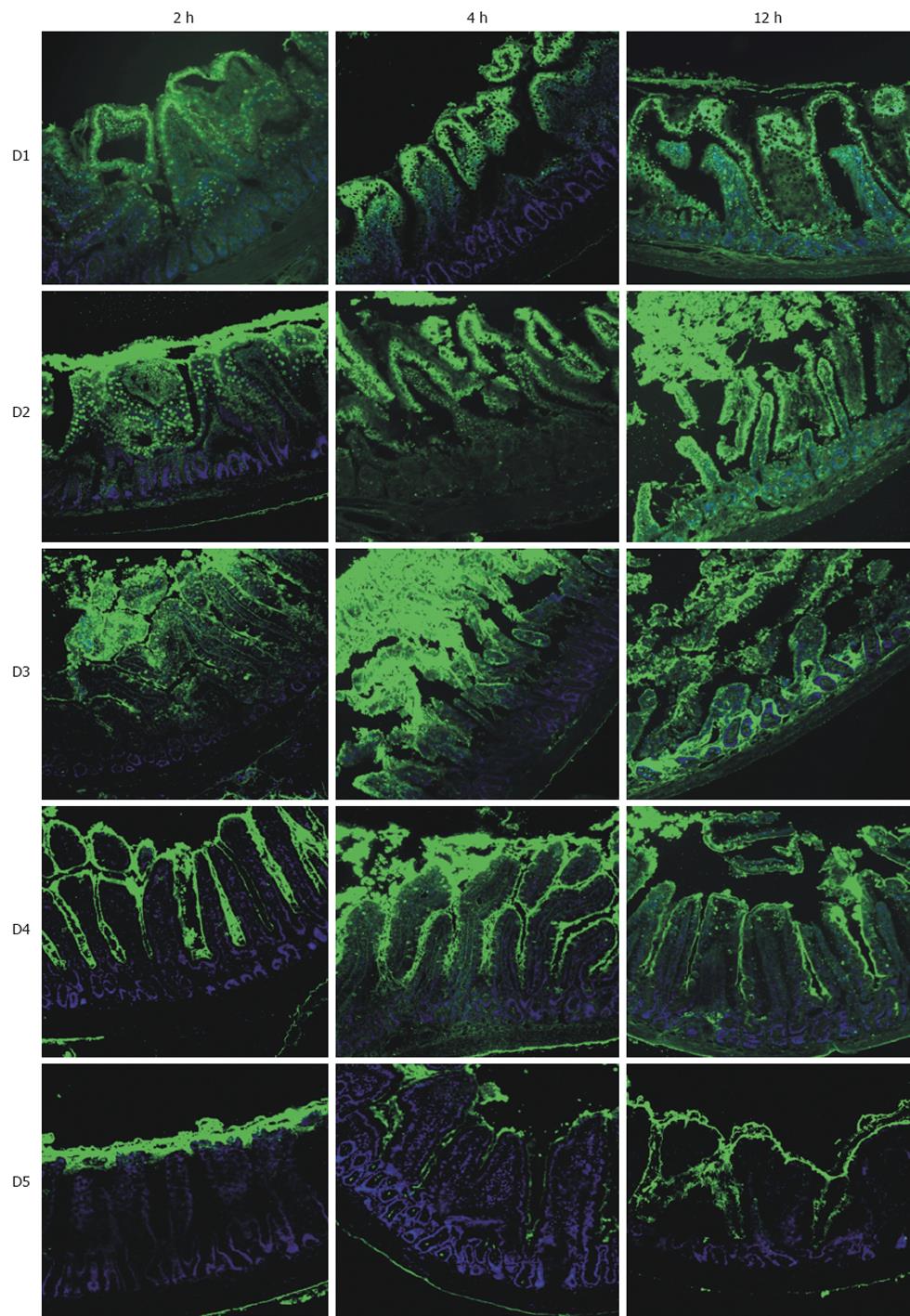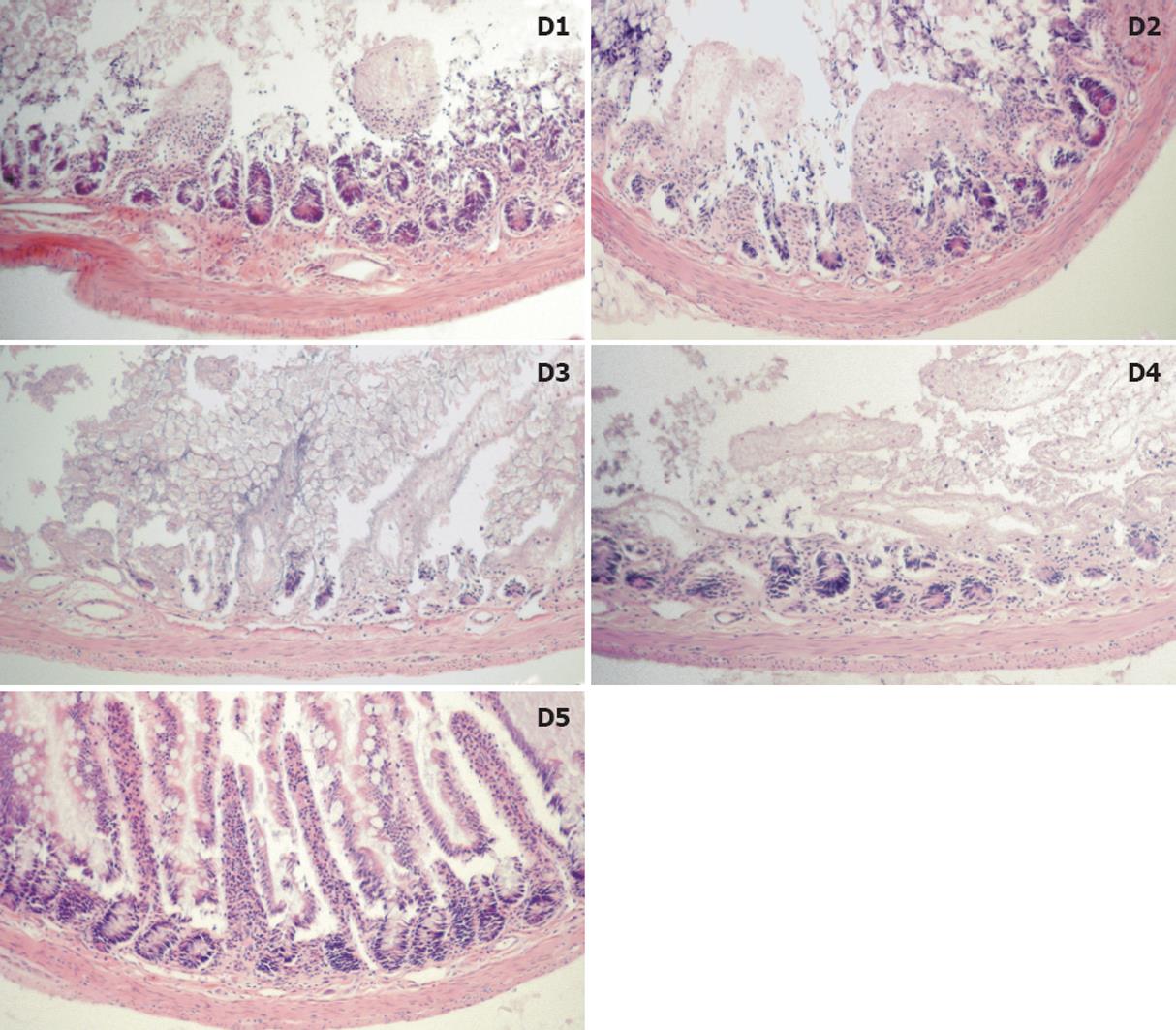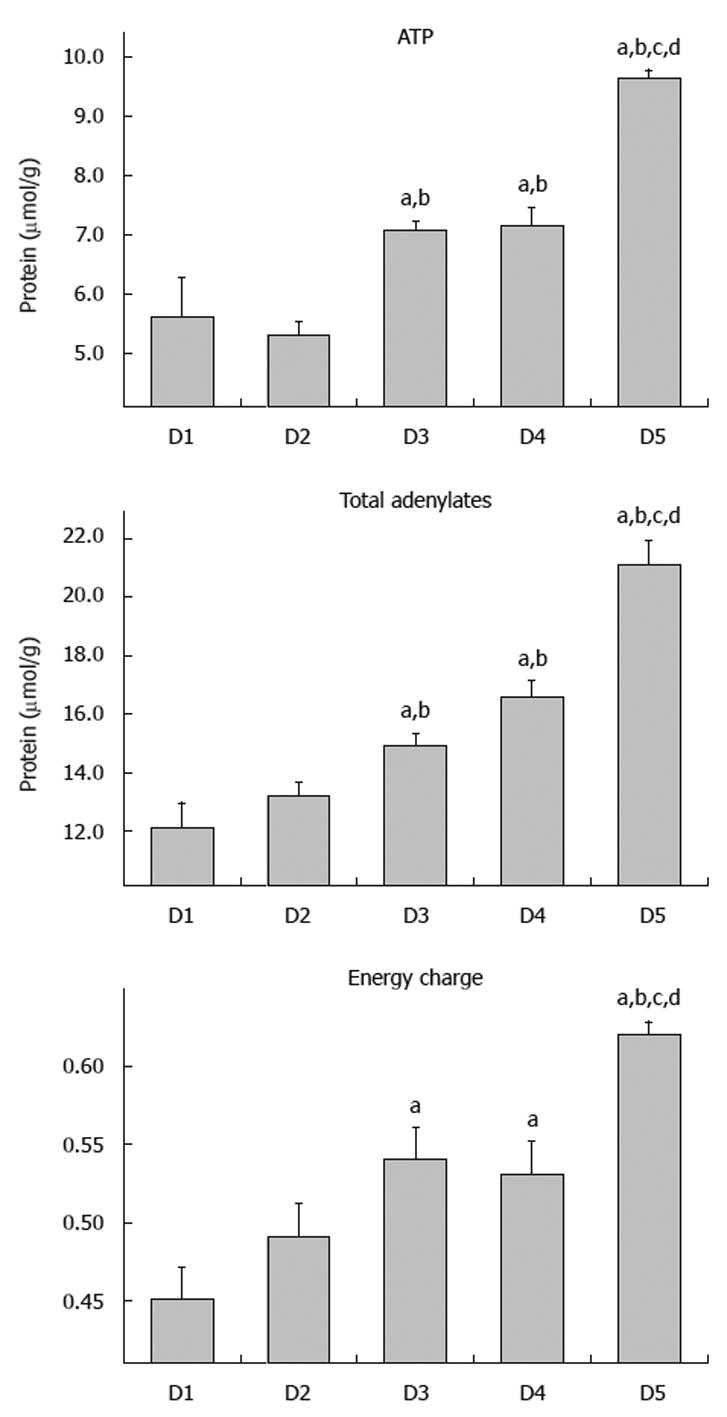Copyright
©2010 Baishideng Publishing Group Co.
World J Gastroenterol. Dec 7, 2010; 16(45): 5701-5709
Published online Dec 7, 2010. doi: 10.3748/wjg.v16.i45.5701
Published online Dec 7, 2010. doi: 10.3748/wjg.v16.i45.5701
Figure 1 Infiltration of fluorescein isothiocyanate-labeled dextrans during cold ischemic storage.
All magnifications (× 10 objective) are of representative fluorescent intensities and mucosal injury. All photos have a standardized exposure time of 250 ms for the fluorescein isothiocyanate channel; exposure times for 4',6-diamidino-2-phenylindole, a common nuclear stain, are 2-20 ms and are included for contrast.
Figure 2 Histology after 12 h cold ischemic storage.
Photos are of representative median grades of histologic injury according to a modified Park’s classification of intestinal injury[25]. Magnification with 10 × objective. HE staining, 5 μm sections. D1: Grade 6.5; D2: Grade 6.5; D3: Grade 7.5; D4: Grade 7; D5: Grade 4.
Figure 3 Parameters of energy metabolism during cold ischemic storage.
Adenosine triphosphate (ATP), total adenylates and energy charge levels are presented. a,b,c,dP < 0.05, significantly different vs D1, D2, D3, D4, respectively.
Figure 4 Correlation between dextran size and energy metabolism.
Linear regression analysis was performed; correlation coeffients (r2) are presented. ATP: Adenosine triphosphate; Mw: Molecular weight.
- Citation: Schlachter K, Kokotilo MS, Carter J, Thiesen A, Ochs A, Khadaroo RG, Churchill TA. Redefining the properties of an osmotic agent in an intestinal-specific preservation solution. World J Gastroenterol 2010; 16(45): 5701-5709
- URL: https://www.wjgnet.com/1007-9327/full/v16/i45/5701.htm
- DOI: https://dx.doi.org/10.3748/wjg.v16.i45.5701












